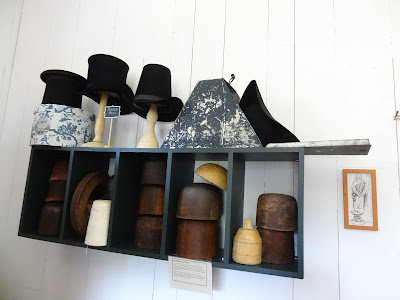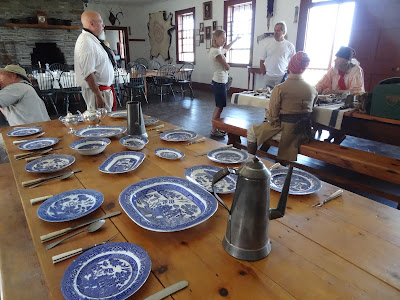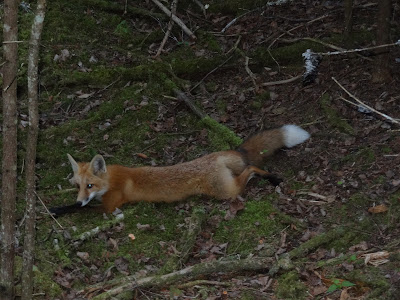Nearby town: Grand Portage, MN
Way up north in Minnesota, along the shore of Lake Superior and near the border of Ontario, lied one of the most important fur trade centers in North America. As beaver hats and other accessories became more and more popular in Europe in the 1700s and 1800s, the fur trade boomed and proved very profitable for the British Empire. Voyageurs (French term for "explorer") would travel from Montreal all the way down the St. Lawrence River, through the Great Lakes, and then to the vast hinterlands of the Canadian North and trap a variety of animals (beaver, otter, lynx, marten, etc.). They would then transport their furs back to Montreal and then onto the US East Coast and/or Europe.
The Voyaguers would make their long journey by canoe. Occassionally, the Voyageurs would come across a rough, impassable part of the rivers they were traversing (rapids, waterfalls, etc.) and then would have to carry (or "portage") their canoes and cargo over land. Most of these portages would be relatively short. However, once the Voyageurs reached the western end of Lake Superior, they would undergo a "Grand Portage" (an 8.5 mile footpath) to bypass the rapids and waterfalls of the Pigeon River as it empties into Lake Superior.
At this Grand Portage, the British Empire would eventually construct a Great Hall at the spot, where Voyageurs would rest, recuperate, trade, and interact socially. Today, the NPS has reconstructed the Great Hall that serves as a museum to learn about the Voyageurs and this vital trade route.
To learn more about the Voyageurs, please read my blog post about our visit to Voyageurs National Park for more info: https://paulnationalparks.blogspot.com/2019/08/voyageurs-national-park.html
Your first stop should be the Great Hall. Every August, the park holds a big rendezvous, and you can visit with lots of reenactors and people in period costume, etc. It was a lot of fun. It's a great museum.
voyageurs would travel on the Great Lakes on these gigantic canoes.
the stockade surrounding the fort.
Every August, the NPS holds a big rendezvous, and you can visit with lots of reenactors and people in period costumes, etc. It's a lot of fun. They also had some exhibits set up about the native Ojibwe peoples.
its incredible how something seemingly insignificant (hats/fashion) really paved the way for the exploration of the North American continent
beautiful china in the dining hall
large collection of furs
rendezvous camp
Ojibwe wigwams, built out of birch bark
Bonus: head a few miles north of the National Monument to the Canadian border and visit Grand Portage State Park. Here, you can see the spectacular High Falls of the Pigeon River. It's a short hike, only a little over a mile.
Pigeon River. On the other side is the Canadian province of Ontario.
We saw this fox along the trail.
the impressive High Falls of the Pigeon River
For more info on Grand Portage National Monument: https://www.nps.gov/grpo/index.htm


































No comments:
Post a Comment